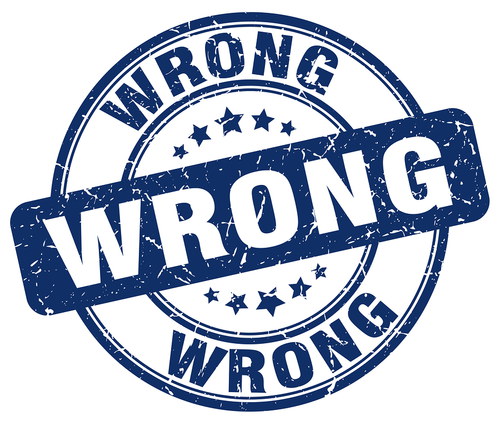Little things in your business are robbing you of profit and sending customers to your competition. With one simple idea, you can create happier customers and rid yourself of unnecessary waste.
When I am wearing my “customer hat,” I often get frustrated with the companies I’m trying to do business with. Far too many things go wrong as I engage with their business processes for selling and delivering products or services. The time and rework to get things right is an unnecessary hassle that discourages me from buying again or recommending the company to others.

Deliveries or services are often late. Parts to assemble are missing. Products are flawed. Merchandise is not properly labeled or priced. Counts are inaccurate. Stores and restrooms are dirty. Clerks are uninformed or untrained, and so on. I remarked to my wife a few years ago that it seemed like 50% of the things we bought had one problem or another. Mistakes cost business owners dearly in lost customers and lost profit, but they are daily occurrences we have all come to accept and expect.
Recently, I threw up my hands in exasperation because Comcast aborted their second attempt to install my home television service—a simple problem they could have avoided with a little better preparation. They will make at least three trips to my house to get the job done—no profit and an unhappy customer. How’s that for a lose-lose proposition? (I eventually switched to Dish TV.)
Nearly every week last summer, my lawn service company cut off sprinkler heads, left the gate open, and didn’t blow the grass clippings from the driveway. I told them of the problems, but the workers were inclined to forget from week to week. So, every year or two I have hired a new company, unfortunately with similar results. The owners of these businesses must wonder why their customers come and go.
The Power of the Checklist
If you are a Systems Thinker, you can put more money in your pocket every year by doing one simple thing—one system improvement. Have workers review and complete a checklist for each customer—the routine items and the special instructions. For example, close the gates—√ check. Blow the grass clippings off the driveway—√ check. Mow around the sprinkler head in the west corner of the backyard—√ check.
Checklists can prevent mistakes in every type of business.
You would be amazed by how many problems are solved, how many things are done right, and how many customers stick around when your workers use a simple checklist to ensure consistent quality. And the power of a checklist doubles when they sign their name and turn it in for review by their supervisor.
Systems Thinkers leverage little things like checklists to produce big results.
A few well-placed checklists can save you a lot of grief and lost profit. Go add some system checklists to your operating procedures right now, and you’ll immediately see things get better.
Oh, and by the way, Box Theory™ Software has a built-in checklist creator, one of its many valuable tools for developing better business systems and processes.







